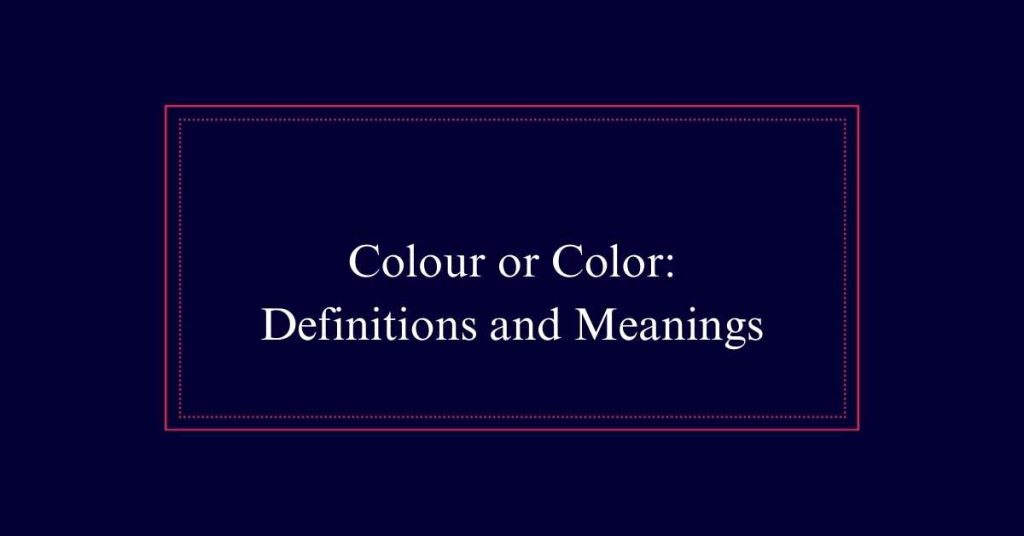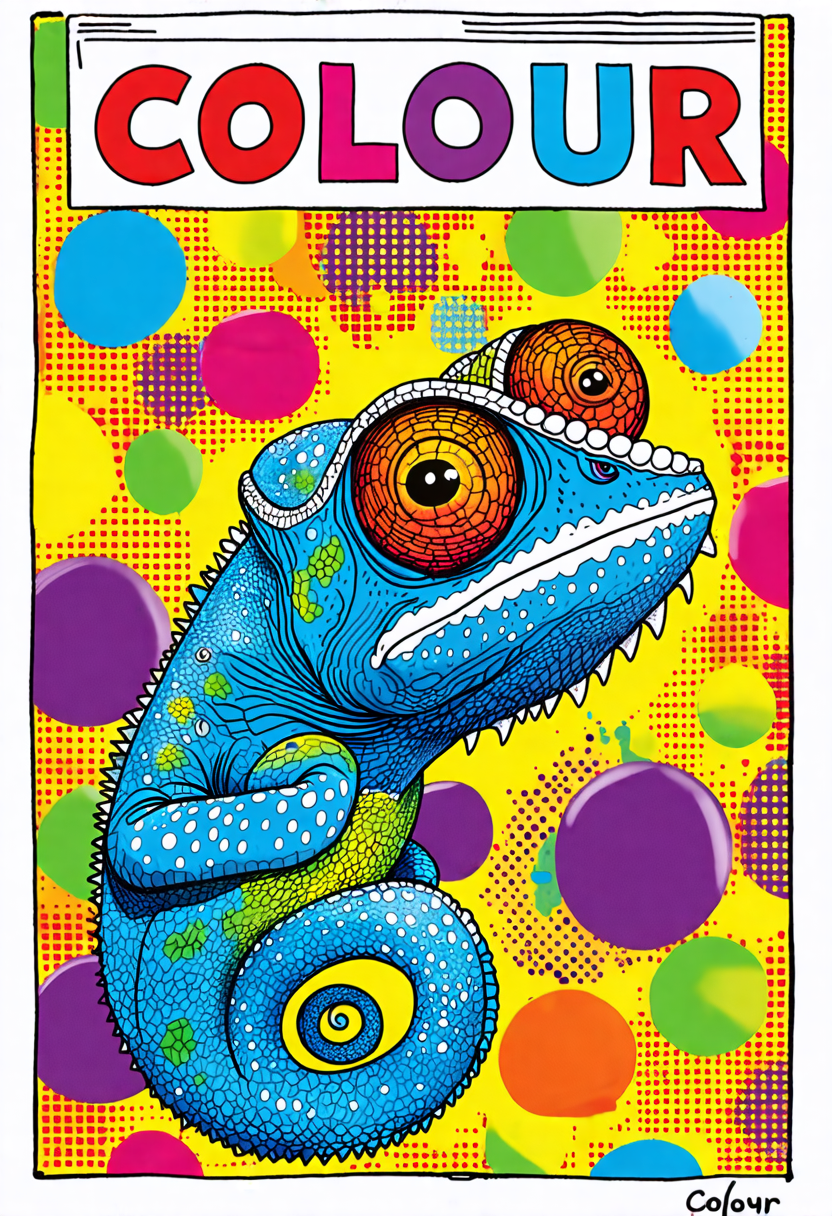Colour or Color: Definitions and Meanings
‘Color’ and ‘colour’ are alternative spellings of the same word, meaning the attribute of things that results from the light they reflect, emit, or transmit. ‘Color’ is the preferred spelling in American English, while ‘colour’ is used in British English, as well as in Canada and Australia. These variations stem from historical differences and language evolution, influenced greatly by Noah Webster who simplified many American English spellings.
Definitions of Color and Colour
Color and colour refer to the same concept but differ in spelling based on regional language variations. Both terms describe the characteristic of visual perception derived from the spectrum of light interacting with the human eye. They are used to denote hues, shades, and tones perceived by the human sense of sight.
Here’s a comparison to make it clearer:
| Aspect | Color (US) | Colour (UK) |
|---|---|---|
| Spelling | Color | Colour |
| Usage Region | United States | United Kingdom and other English-speaking countries |
| Origin | Latin ‘color’ | Latin ‘color’ via Middle English ‘colour |
| Common Context | American English texts | British English texts |
Spelling Variations
Understanding the regional preferences in spelling, it is important to explore the variations between ‘color’ and ‘colour.’
The spelling ‘color’ is primarily used in the United States. In contrast, ‘colour’ is favored in many other English-speaking countries, including the United Kingdom, Canada, and Australia. These variations are not just regional quirks; they reflect deeper historical influences.
The divergence in spelling can be traced back to language reforms in the 19th century. Noah Webster, an American lexicographer, advocated for simpler spellings to distinguish American English from British English. As a result, ‘color’ became standard in the U.S., while ‘colour’ remained in use elsewhere.

American Vs. British English
Differences between American and British English often manifest in spelling variations such as ‘color’ and ‘colour’. These differences extend to other words, creating distinct writing styles. Understanding these variations is important for clear communication in international contexts. Below is a table illustrating some common differences:
| American English | British English |
|---|---|
| color | colour |
| honor | honour |
| flavor | flavour |
| center | centre |
| analyze | analyse |
Historical Origins
The historical origins of the word ‘color’ trace back to the Latin term ‘color,’ which made its way into Middle English through Old French. The term has since evolved, reflecting the linguistic changes over centuries.
- Latin Influence: The Latin root ‘color’ provided the foundation for the term.
- Old French Adaptation: The word was adopted into Old French as ‘colour.’
- Middle English Transformation: The term transformed into Middle English, where it began to take its modern form.
- Cultural Integration: Over time, the word ‘color’ became integrated into various languages and cultures, reflecting the importance of color in human expression.
Noah Webster’s Influence
Noah Webster’s influence was pivotal in shaping American English spelling conventions, including the preference for ‘color’ over ‘colour.’ His goal was to simplify English spelling and make it more logical. Webster’s 1828 dictionary introduced many changes that differentiated American English from British English. These changes included removing unnecessary letters, as seen in ‘color.’
| Word (British) | Word (American) | Notes |
|---|---|---|
| Colour | Color | Simplified spelling |
| Honour | Honor | Removal of ‘u’ |
| Centre | Center | Phonetic adjustment |
| Theatre | Theater | Phonetic adjustment |
| Defence | Defense | Spelling modernization |
Language Identity
Language identity plays a pivotal role in defining cultural and national distinctions. The way people spell words, such as ‘color’ or ‘colour,’ reflects more than just linguistic preference; it signifies a connection to a particular tradition, history, and community.
Cultural Heritage: Spelling variations often align with regional cultural practices.
National Identity: Countries like the U.S. use ‘color’ to establish their unique identity.
Historical Influence: Figures like Noah Webster influenced American English spelling reforms to foster national unity.
Global Communication: Understanding these differences is essential for effective international communication.
Choosing the Right Spelling
Understanding the cultural and historical significance of spelling variations is essential. It becomes important to know how to choose the right spelling for your audience.
The choice between ‘color’ and ‘colour’ primarily depends on geographical location. In the United States, ‘color’ is the accepted spelling, influenced by Noah Webster’s reforms. In contrast, ‘colour’ is used in British English and other English-speaking countries.
Consistency in spelling is vital. If you are writing for an international audience, pick one version and stick with it throughout your text. This guarantees clarity and avoids confusion.
Audience Considerations
When considering your audience, understanding their geographical and linguistic background becomes crucial. Different regions have distinct preferences for spelling, particularly between American English and British English.
This understanding helps tailor your writing to meet audience expectations and maintain engagement.
- Geographical Location: Determine if your readers are primarily from the United States or other English-speaking countries.
- Linguistic Preferences: Be aware of the regional variant of English your audience uses.
- Professional Settings: Consider the industry standards and practices regarding spelling in your field.
- Educational Background: Recognize the form of English taught in the educational systems of your target audience.
Consistency in Spelling
Maintaining consistency in spelling is essential for clear and professional communication. When choosing between ‘color’ and ‘colour,’ it is important to select one spelling and use it throughout your document. This consistency helps avoid confusion and maintains the reader’s trust.
Consider the audience’s preference and the regional spelling norms. For example, use ‘color’ if your audience is primarily in the United States, and ‘colour’ for British or other international readers. Consistent spelling also reflects attention to detail and enhances the document’s credibility.
If unsure, err on the side of uniformity, ensuring that your chosen spelling aligns with the reader’s expectations and the context of your writing.







